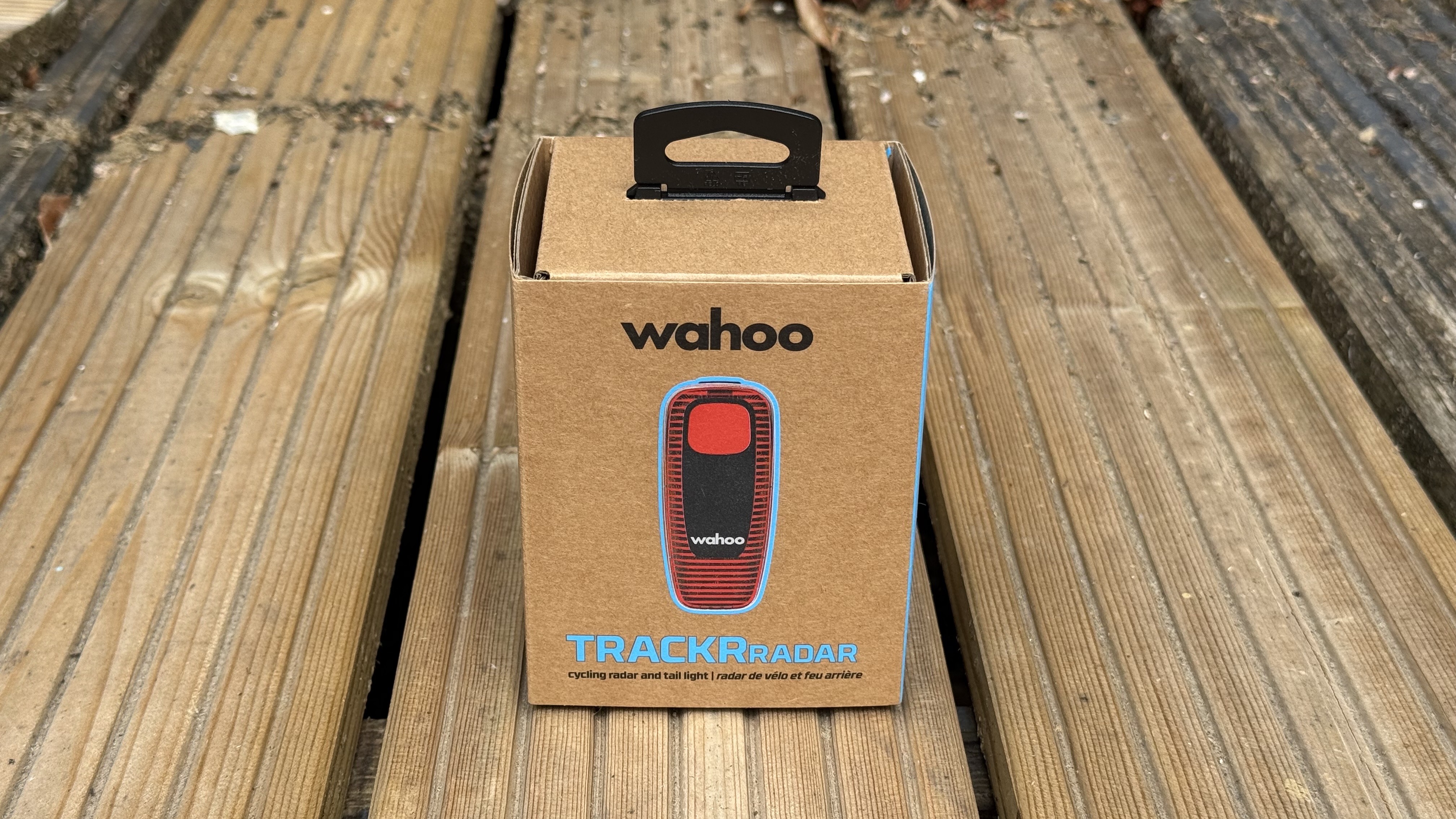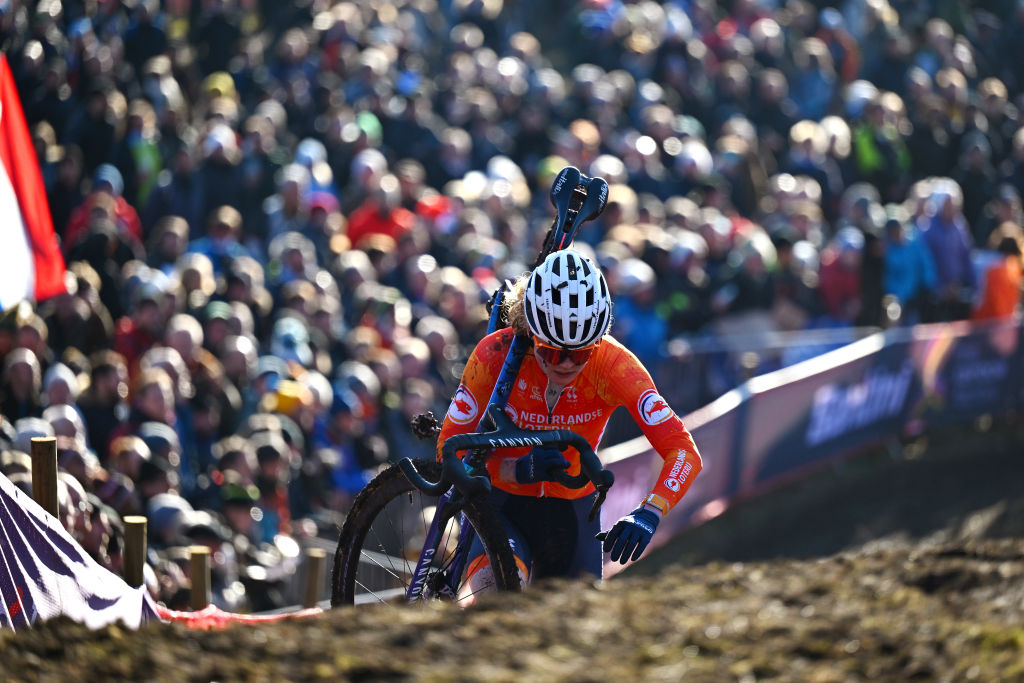Cyclingnews Verdict
The Wahoo Trackr Radar is almost as good as, or a fair bit better than, the competition in most aspects. Battery life is class leading while the different light modes and brake light are great features. Field of view is not quite as wide as Garmin, but the minutely different mount is the biggest annoyance.
Pros
- +
A wide variety of secure mounting options for different seat posts
- +
Very good battery life
- +
Light is bright and has side visibility
- +
Great array of modes and features
- +
Wahoo App makes setup and features easy to use
Cons
- -
Mount can be fiddly to adjust initially
- -
Mounting system is 1mm deeper than standard quarter turn mounts
- -
Only works with bike computers rather than with a phone app too
- -
FOV is not quite as wide as the Garmin Varia
You can trust Cyclingnews
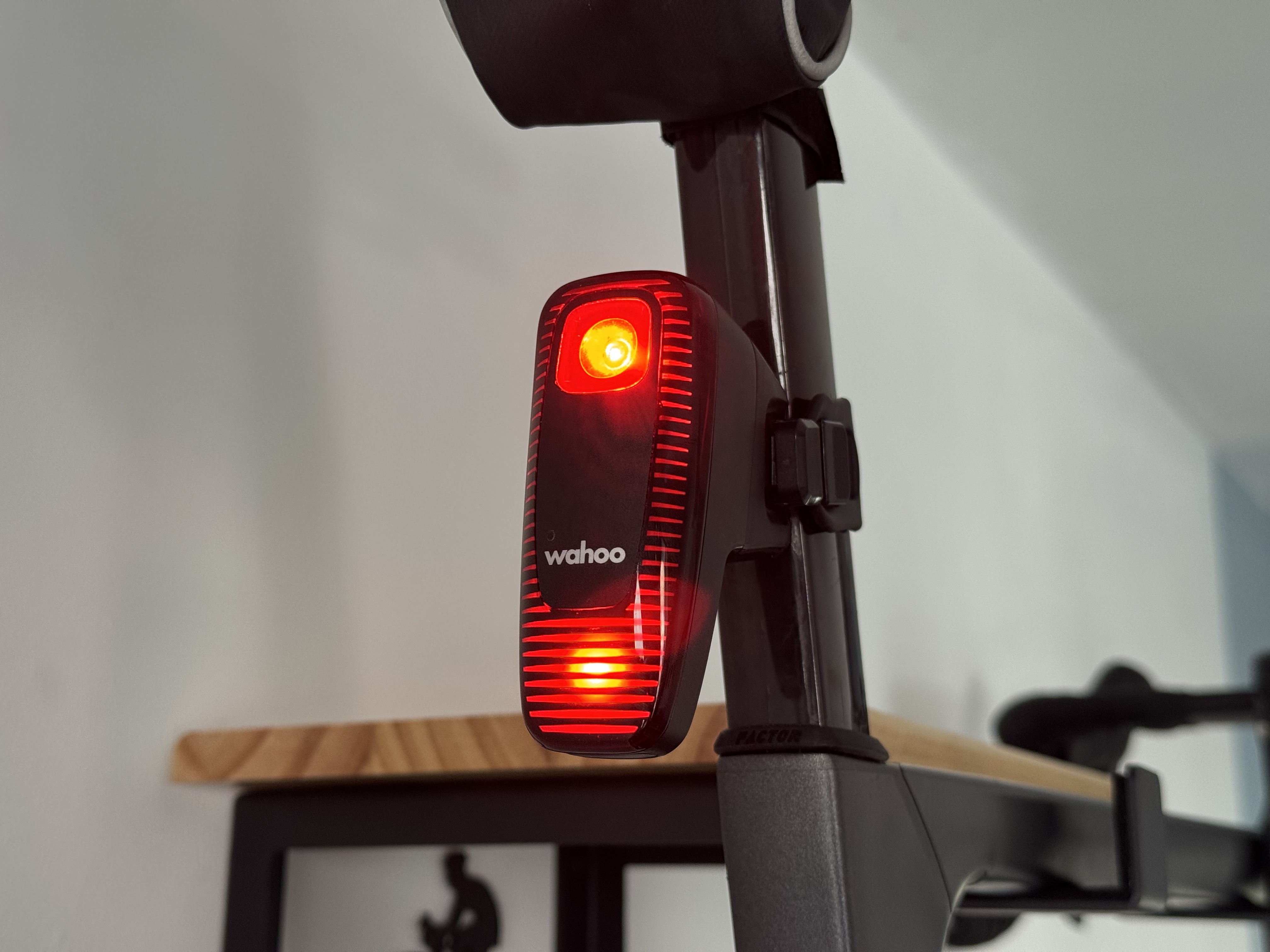
- Price: £179.99 / $249.99
- Weight: 62g / 100g or 2.2oz / 3.5oz (without/with mount?
- Light Modes: 4
- Field of View: 35º
- Battery life: 20hrs (claimed)
Wahoo’s foray into the radar light market is part of the brands new Trackr range of gadgets, which started with the Trackr HR monitor. In the Trackr Radar, Wahoo has aimed to take the fight to bike computer, heart rate monitor, indoor trainer, and now radar rival, Garmin, as well as targeting the best bike lights overall.
In terms of radar performance, the two are incredibly evenly matched, maybe with the Garmin coming out marginally ahead thanks to a greater field of view (FOV). However, the Wahoo has a greater battery life, faster charging, USB-C charging, and an array of features that make the Trackr Radar stand out from the crowd.
Power saving, brake light, and dual LEDs for greater visibility are all superb features, and at a price that is only a small amount more than the Garmin Varia RTL515, so the Wahoo offers better value in my opinion. I would say this is the best radar tail light available at the moment, even with a mount that throws up some frustrations.
Design and specifications
The Wahoo Trackr Radar is built upon a radar unit that houses two red LED lights for rear luminosity. The bottom of the two lights also has an increased range of visibility to give light from the sides of the light as well. These LEDs have a maximum luminosity 53 Lumens on the most powerful setting. When in flash settings, the lower light pulses, whereas the top light flashes on and off. This is available in both the High and Low flash mode, whereas the High and Low Steady modes remove the flash making the lights usable in Germany where flashing rear lights are not allowed. Power and modes are activated using the single button on the top of the unit.
Battery life for the Flash modes is 15-20 hours depending on High or Low, while Steady modes are 10-15 hours again based on High or Low. Additional settings are accessible within the Wahoo App, where the brake light, power save, and Quick Alert modes are able to be activated. Power save means that while no cars are in the detection zone, the light dims so as to save battery life, while Quick Alert will flash when a car starts approaching so as to draw more attention to the cyclist. Brake Light is another neat feature, with accelerometers in the light detecting when you are slowing and brightening the light, similar to a brake light on a car.
There is one additional light which shows while charging. A blinking red flash indicates less than 5%, orange shows 5-30%, while green is 30% or higher. Charging is done via a USB-C port underneath the light and is claimed to take two hours long from flat.
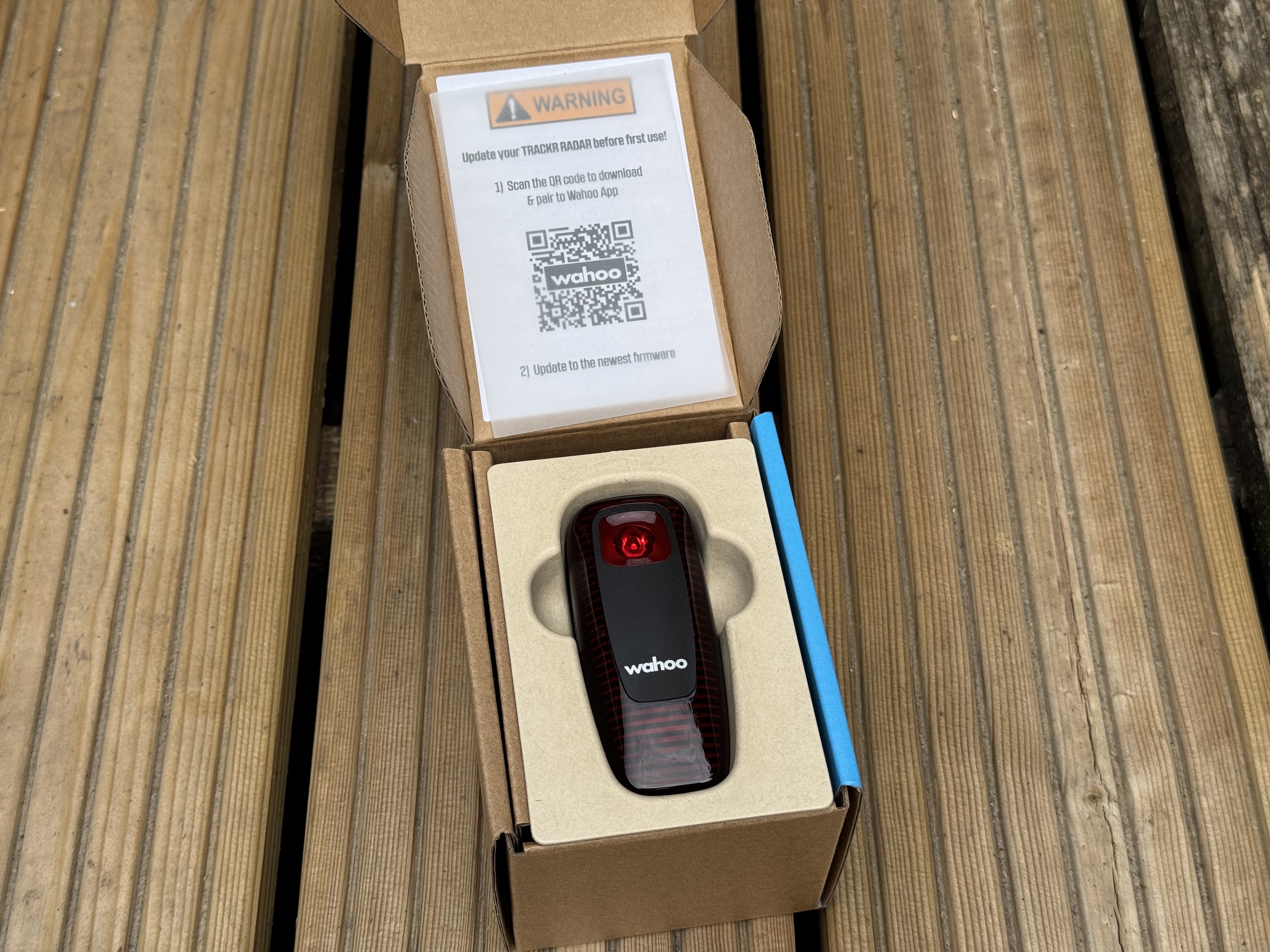
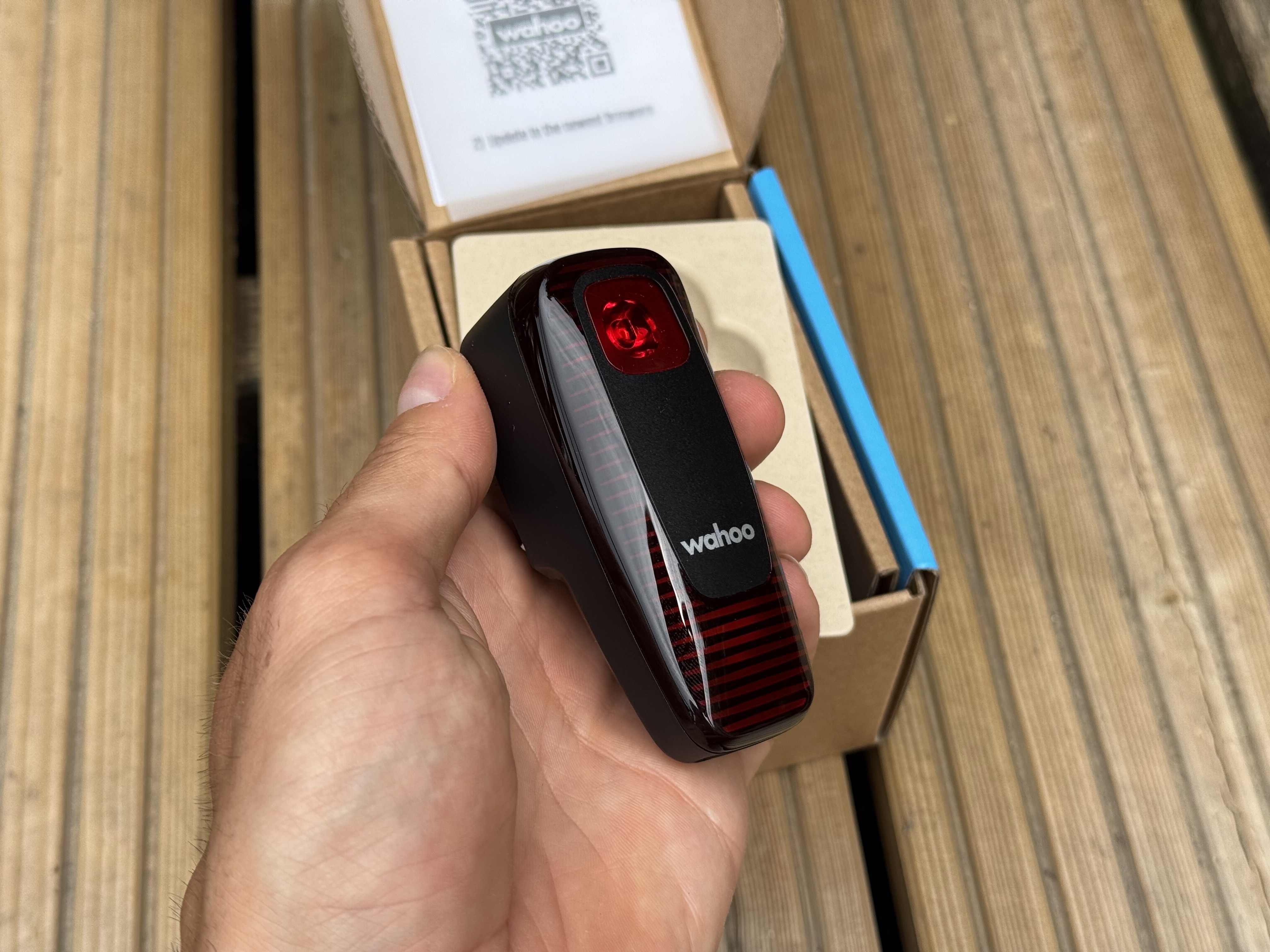
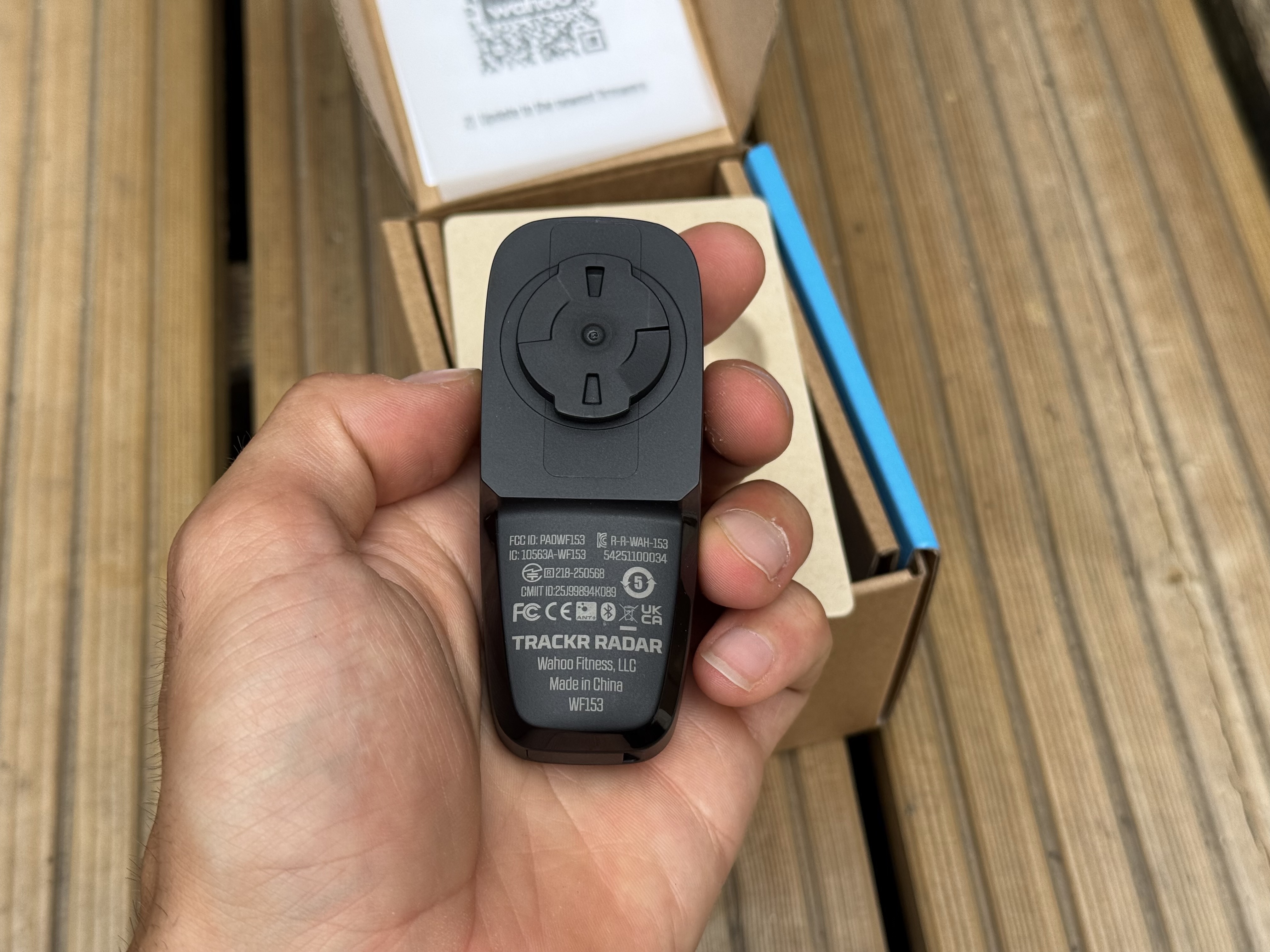
Moving onto the radar itself, Wahoo claims a 150m range behind, while field of view is 35˚. This then gives alerts to compatible bike computers, and works the same way as any radar light does with given computers. On colour screen Wahoo units, a coloured bar shows along the left hand side of the screen. Green is clear, orange with a car marker indicates a slower speed differential, while red indicates a faster approaching car. Multiple cars can be detected at once, showing several car icons on the left side of the screen.
The latest race content, interviews, features, reviews and expert buying guides, direct to your inbox!
Mounting uses a more sturdy ladder attachment than the likes of the Trek CarBack light with an adjustable ladder as well as metal hook tab to keep it securely in place. This then attaches round the quarter-turn mount unit, which has adapters for narrow aero tubes, round tubes, and square backed tubes with two ladder lengths. The quarter-turn mount is ever so slightly deeper than regular mounts such as those Garmin uses, so they are only compatible with the Trackr Radar.
Dimensions wise, the light itself measures 37.12mm wide, 89.87mm tall and 29.07mm deep, while the mount adds an extension back from the seatpost of 36.04mm. Weight of the light is 62g by itself, 100g total with the mount and strap included.
Performance
Setting up the light is very easy, as a QR code is supplied to synchronise the Trackr Radar with the Wahoo App, and make sure everything is up to date. Settings can then be adjusted as the brake light, quick alert, and power save are not on as standard. Attaching the light itself was also very easy as I chose the square back tube adaptor for the Factor Ostro VAM I was testing it with, and then the long ladder with a few rungs skipped to make it sit tight enough. Simply turn the Radar in the mount and it’s good to go.
Setting off on a ride, the Trackr Radar is as easy to synchronise to a bike computer – a Wahoo Elemnt Bolt V3 in my case – as any other radars I’ve tested or used. The light itself is very effective when looking at it on the bike, providing a bright flash on the high settings and being nicely visible from the side. The light is powerful enough to use at nighttime.
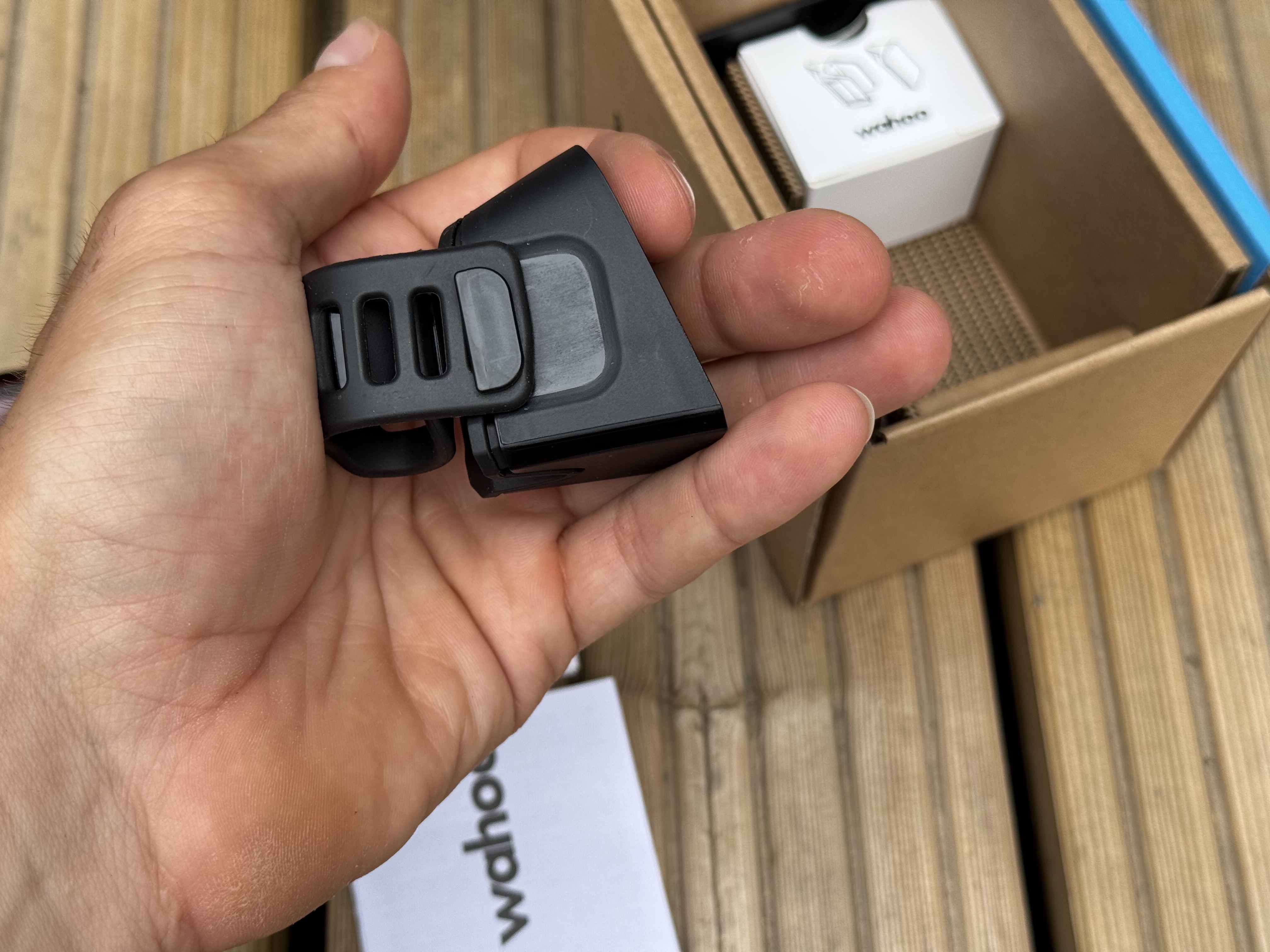
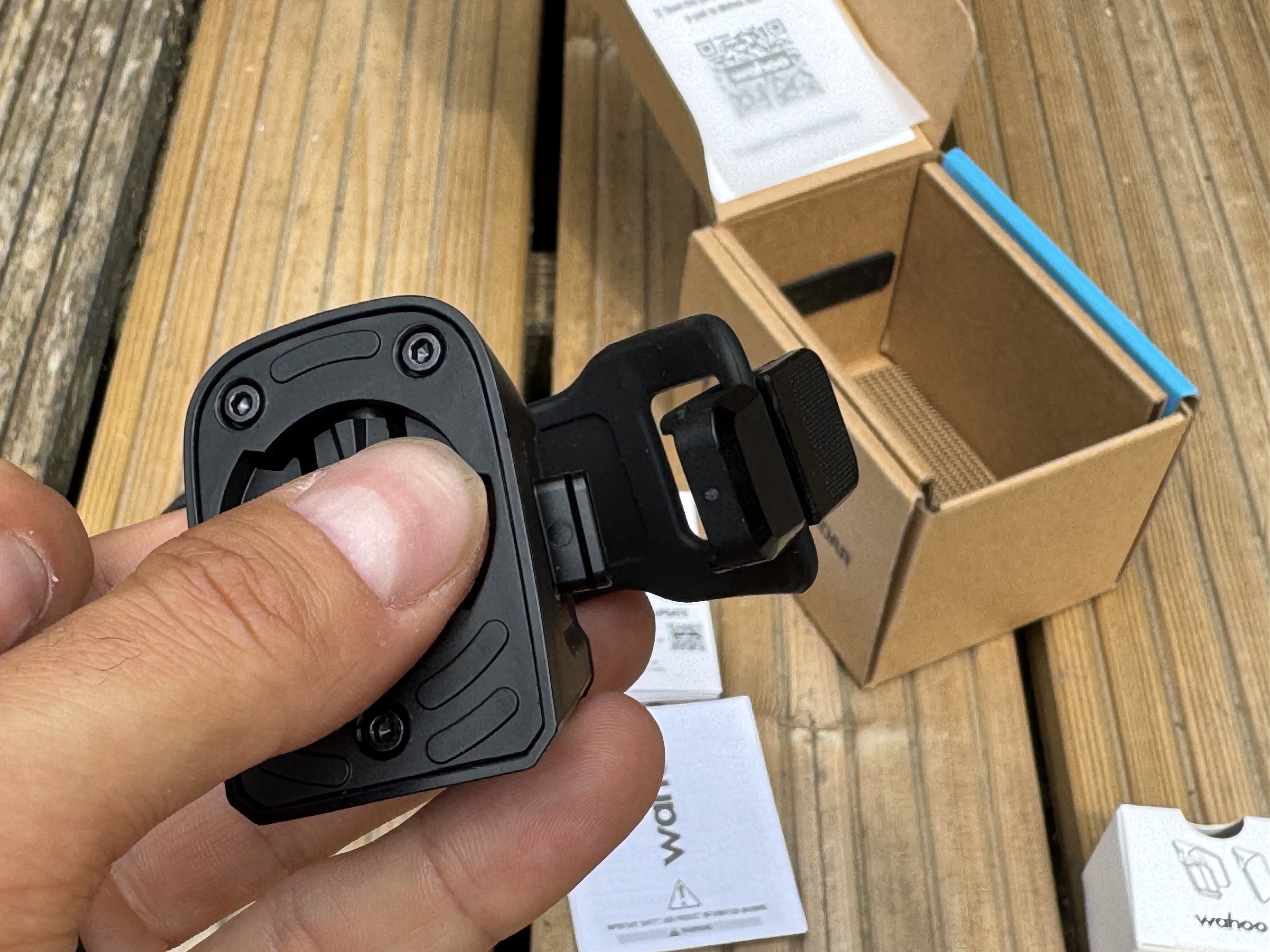
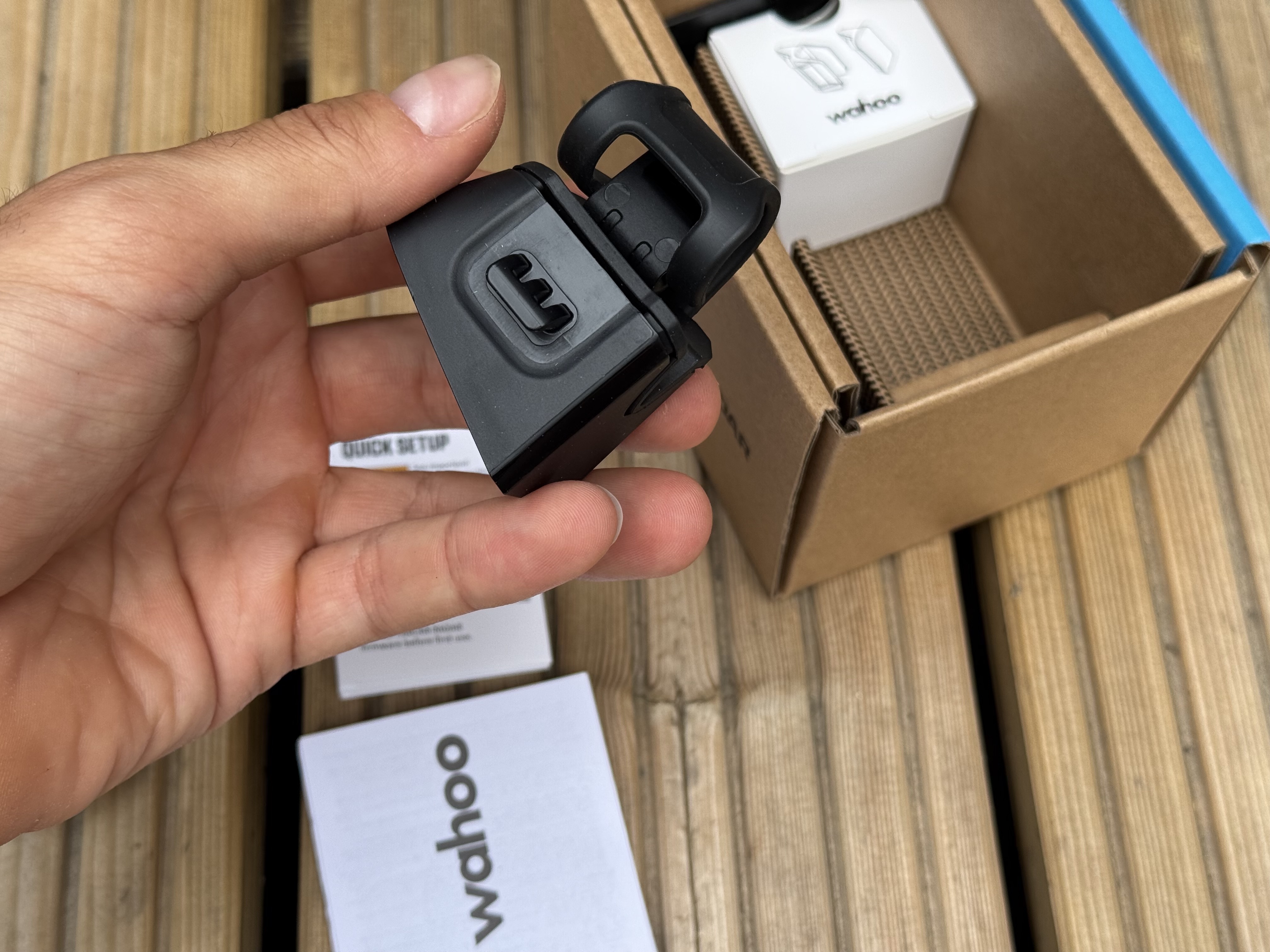
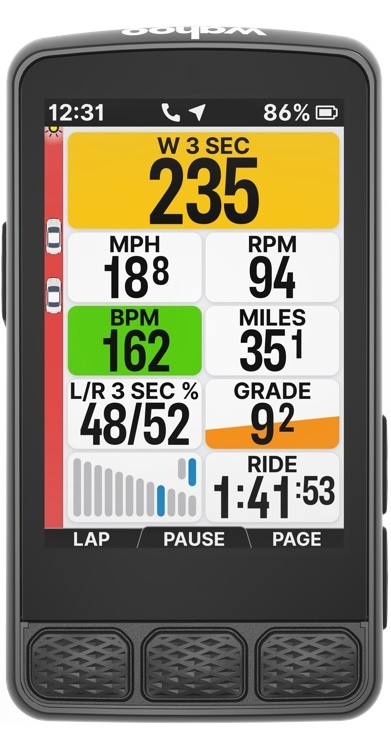
The radar worked brilliantly straight from the off, having what appears to be a slightly longer detection range than the usual Varia radar that I have owned for a few years, but shorter than the Trek CarBack. Once a car was detected, the Bolt flashed orange or red and showed the car icon on the left side. It seemed able to pick up around four vehicles at once, more than that and it seems to struggle to decipher the individual vehicles.
What did impress me a lot was the ability for the radar to maintain detection even when speed was matched between myself and the car. The Varia does this well too, but the CarBack does not. I only ever lost detection when my speed increased relative to the car behind and so the distance increased. However once the car matched or exceeded my speed it popped back on to the detection screen. I did get the occasional false positive, when something is detected when nothing is there, but I did not have any false negatives, when a car is present but is not detected.
One area the Trackr Radar did not perform as well as the Varia, but better than the CarBack, was the field of view (FOV). On twisty roads, the Trackr did occasionally drop detection, only to pick the car back up again when the road straightened. Wahoo states a 35˚ FOV, while Garmin has a 40˚coverage, so is a bit better for twisty roads. It’s only a minor difference though and on many of the twisty roads I would have lost detection with the Varia too as the car simply went out of sight and therefore detection.
In terms of added features, I recruited a friend to ride with me to test this out. The brake light works brilliantly, igniting the light when it detects you are slowing. It doesn’t activate as you slow during a coast, but steady to hard braking does activate it. Power save also worked well, dimming the light until an object appeared within detection. I do like that after you turn the Radar off, upon turning it on again it defaults to the same mode that it was on, saving cycling through the modes.
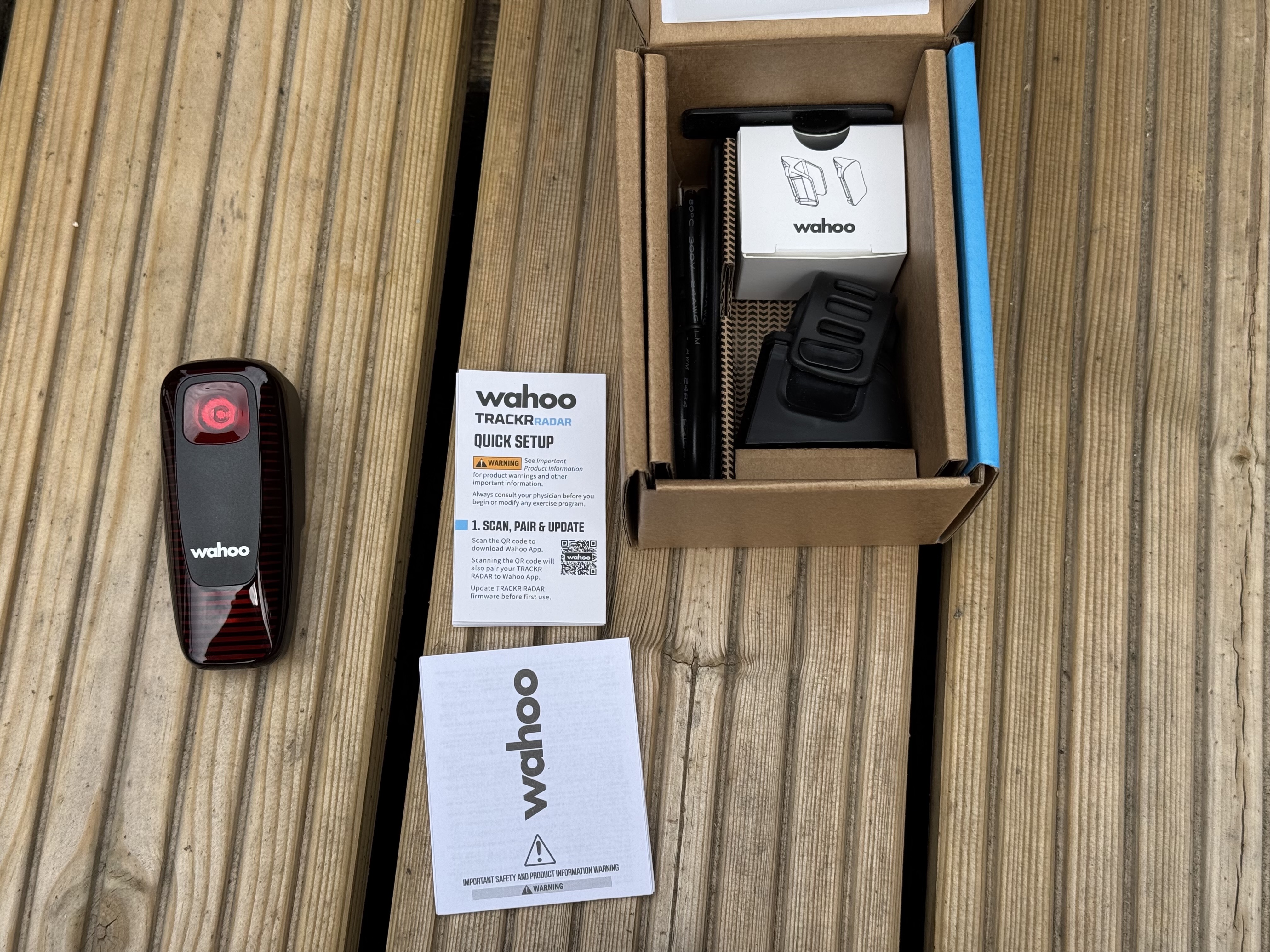
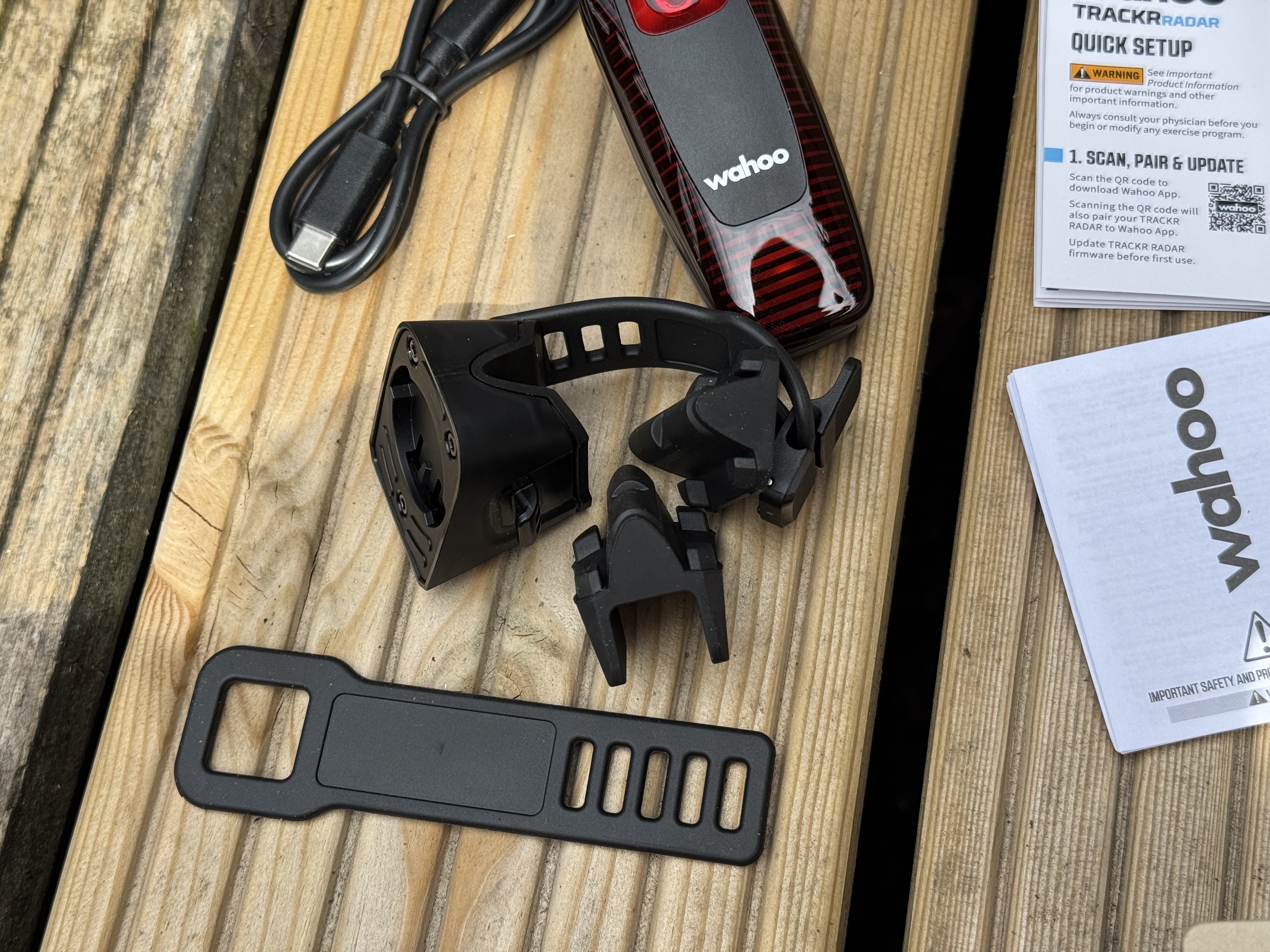
Battery is also mightily impressive. Testing the CarBack, 7 hours maximum was not a huge amount and then a 4 hour charge was required. With the Varia this was generally better, but my unit is an older one and the battery life had dipped. With the Wahoo, the claimed battery life appears to ring true, with over a week of riding and about 15 hours completed using it and it still has charge to spare on the strong flash setting with power save.
Add to that a 2 hour charge time, this means that if you have run out of battery, only a short 30min delay gives enough battery life for about 3-4 hours of riding. It’s an area where the Wahoo does brilliantly against the competition. USB-C charging is also good to see, and only isn’t expected as standard in the radar light market as Garmin refuses to leave behind micro-USB charging. However the charge port is located at the bottom of the unit. It’s behind a solid enough rubber tab, but is located where dirt and water will collect and impact.
Moving onto the mount, and this is a mixed area. The mount itself I really like, as it offers a lot of adjustability and more security than the simple loop provided with the Varia, or the fiddly ladder mount of the CarBack. Two ladders that can be adjusted, plus a tab to make taking the mount off easier, are far better designs than what I have experienced before. I also love how sleeky the unit integrates with the mount.
However, there is one glaring issue, and that was the decision to make the quarter-turn mount 1mm deeper than every other competitor. I imagine this was officially done to make the twist tabs thicker and potentially less likely to break, something that I’ve never experienced anyway after using a Varia since 2018. The issue is that this makes any old Varia mounts incompatible with the Trackr Radar, so new mounts require purchasing. It feels a superfluous change just to make more proprietary Wahoo mounts, of which there are several aftermarket options now. I don’t think it was necessary, and is simply just a bit awkward.
Value
The Wahoo Trackr Radar is the most expensive radar taillight on the market at the moment, save for the Garmin Varia RCT715, however that includes a camera inbuilt to the system. The likes of the Varia RTL515 and Trek CarBack are both slightly cheaper alternatives.
However, value is not just about the price, but what that price package actually offers. In the Trackr Radar, not only does the unit work brilliantly as an effective tail light and radar, but it also packs some brilliant features in to that where others lag behind.
The light itself is bright and offers great visibility, while the radar overall works just as well or better than the competition.
Where the Trackr Radar really stands out is battery life and additional features such as the brake light. In these areas it excels beyond others and really boosts the value of the unit as a whole. I think in terms of the whole package the Trackr Radar offers the best option on the market, and for a price that is not much higher than the other well regarded performers.
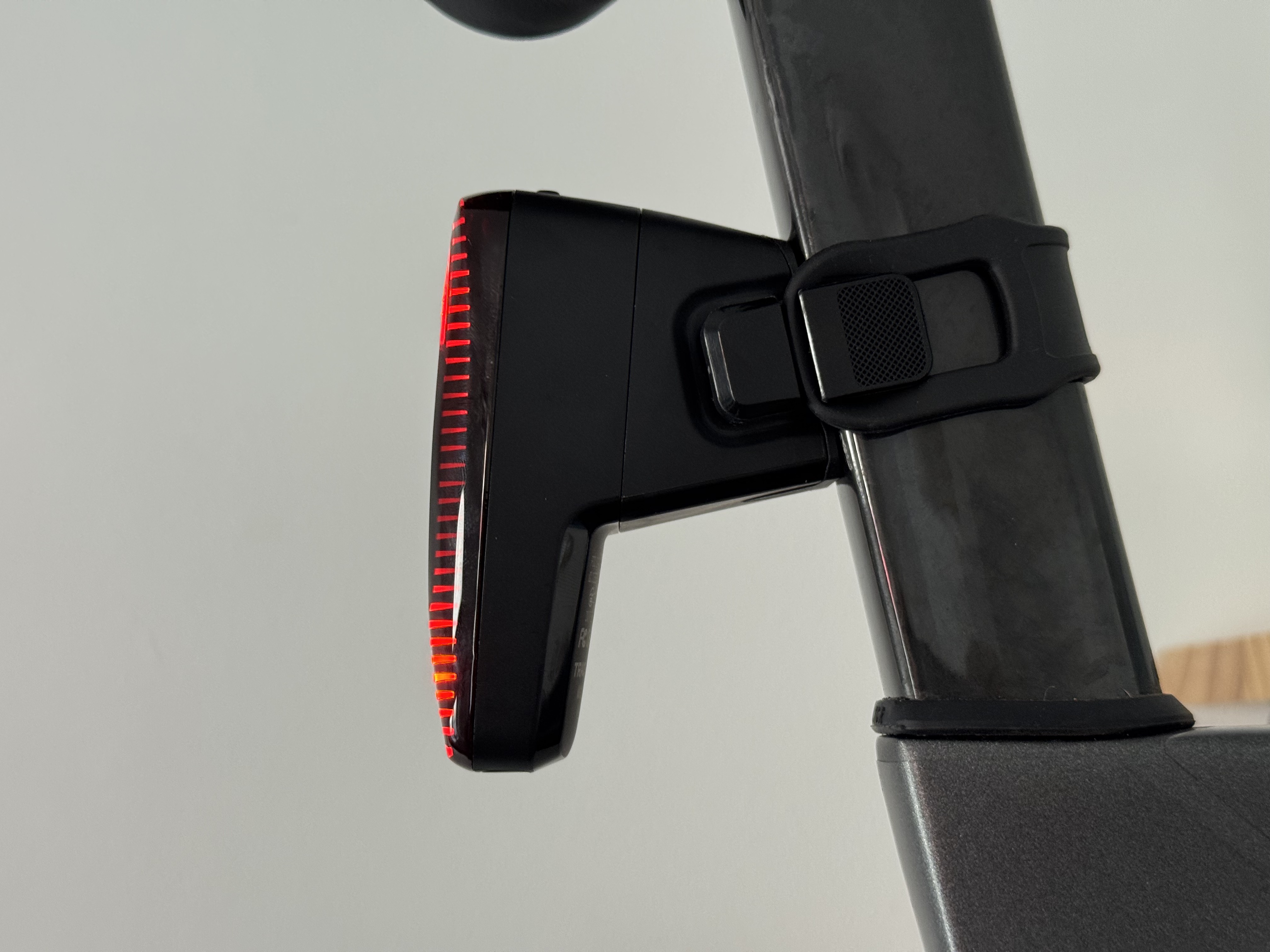
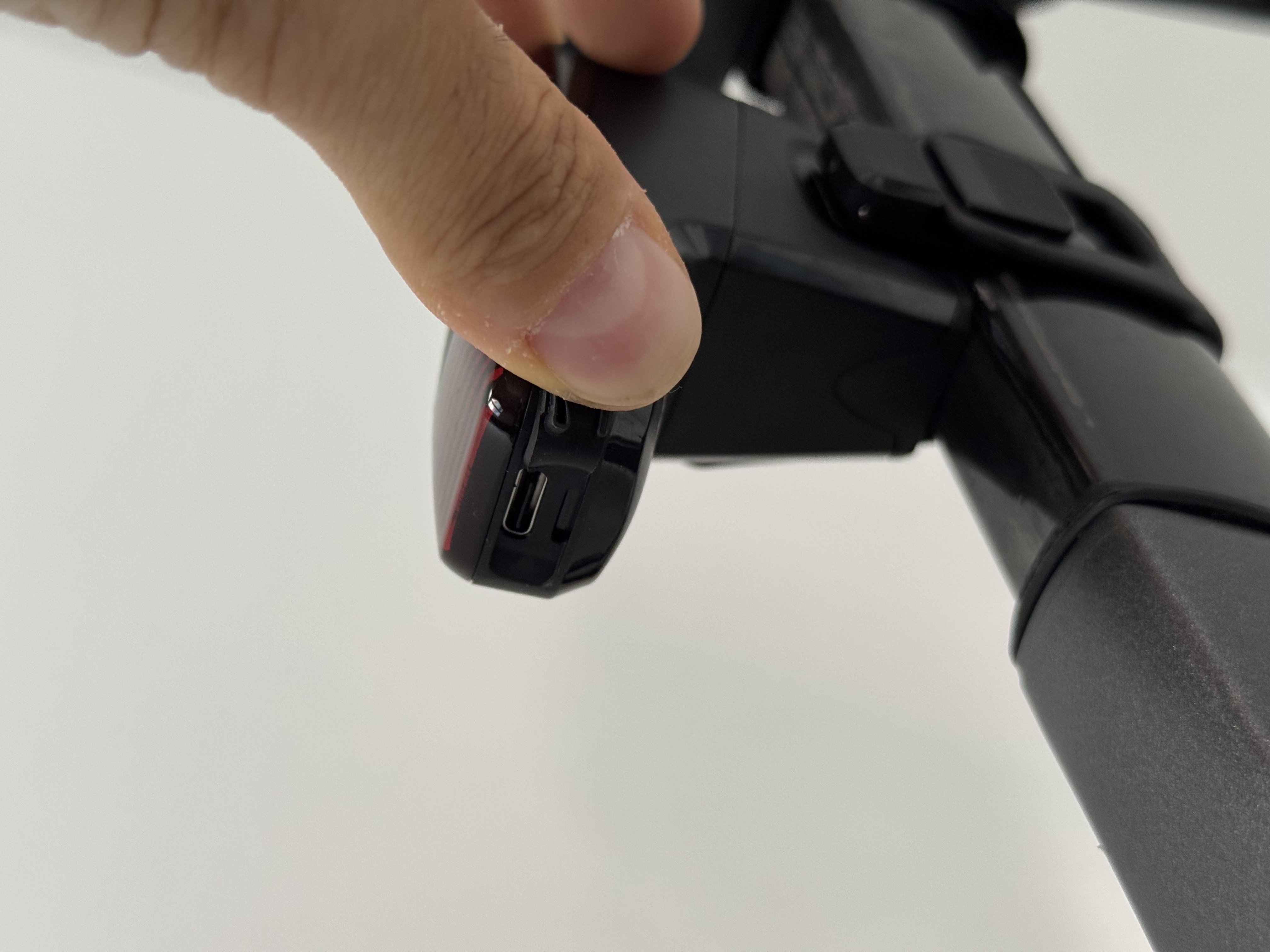
The mount being proprietary is annoying, but enough options are supplied with the device that a new mount is not necessary to be purchased.
I have been riding with a radar taillight for years now, and don’t ride without one. The Wahoo Trackr Radar is the first radar light that I would buy to replace my older generation Varia light. Better battery life and more features chief among those reasons, which I think make this a great value package.
Verdict
The Wahoo Trackr Radar light for me, has dethroned the Garmin Varia RTL515 as my go-to radar taillight. Others have tried to take this crown, and have failed. However, the Wahoo performs just as well when it comes to radar functionality, while the light is even better thanks to dual LEDs.
USB-C charging, longer battery life, faster charging, and an assortment of brilliantly useful features all contribute to making this an impressive overall package. All these new features are things I actively use and appreciate, and only a fractionally higher price than competitors means it offers better value on the whole.
The mount being proprietary is annoying if you have a load of Varia mounts which will now be redundant. Otherwise the Wahoo comes with all the necessary mounting options so nothing extra is required upon purchase. So far, this is the best radar taillight unit that I have used and I don’t ride without it anymore.

Attributes | Notes | Rating |
|---|---|---|
Design and aesthetics | The unit itself is slim, lightweight, and the mount is exceptional, working with pretty much any shape or depth seat post I’ve thrown at it. However, making the turn mount 1mm deeper so that it is not compatible with other mounts is a weird and frankly daft move, otherwise it would be 10/10. | 9/10 |
Light performance | Garmin’s Varia RTL515 offers a slightly higher max lumens, but 53 on the Wahoo is plenty good enough. Multiple LEDs make the flash more visible, while there is enough side visibility for additional safety. | 9/10 |
Radar performance | Radar detection is on par or better than the Garmin Varia RTL515 I have, with similar detection range and slightly smaller FOV. However, the radar feature only works with cycling computers, whereas the Trek CarBack can work with a phone app, making it a little more versatile in that area. The CarBack also has a longer pickup range, but the Trackr beats it on FOV and not having false negatives, very important for a radar light. | 8/10 |
Practical features | We’re going off light features, not the mount. A brake light, auto-dimming when cars are not present, and flash to warn when a car is detected regardless of light mode are all brilliant features that I love. Multiple modes and easy to use button all boost this performance.
| 10/10 |
Battery and charging | A battery life that is better than any other available radar light on the market in comparable modes is great. Charging is done easily via USB-C and does not take overly long at 2 hours. The battery port could do with being located somewhere other than underneath the light though where dirt can flick up. | 9/10 |
Value for money | It’s a little more expensive than the Garmin Varia and Trek CarBack, but it packs so many more excellent features, greater battery life, and super light and radar that it makes the unit the best radar light available at the moment and so in my books it’s worth the money. | 10/10 |
Overall rating | Row 6 - Cell 1 | 92 |

Freelance cycling journalist Andy Turner is a fully qualified sports scientist, cycling coach at ATP Performance, and aerodynamics consultant at Venturi Dynamics. He also spent 3 years racing as a UCI Continental professional and held a British Cycling Elite Race Licence for 7 years. He now enjoys writing fitness and tech related articles, and putting cycling products through their paces for reviews. Predominantly road focussed, he is slowly venturing into the world of gravel too, as many ‘retired’ UCI riders do.
When it comes to cycling equipment, he looks for functionality, a little bit of bling, and ideally aero gains. Style and tradition are secondary, performance is key.
He has raced the Tour of Britain and Volta a Portugal, but nowadays spends his time on the other side of races in the convoy as a DS, coaching riders to race wins themselves, and limiting his riding to Strava hunting, big adventures, and café rides.
You must confirm your public display name before commenting
Please logout and then login again, you will then be prompted to enter your display name.
